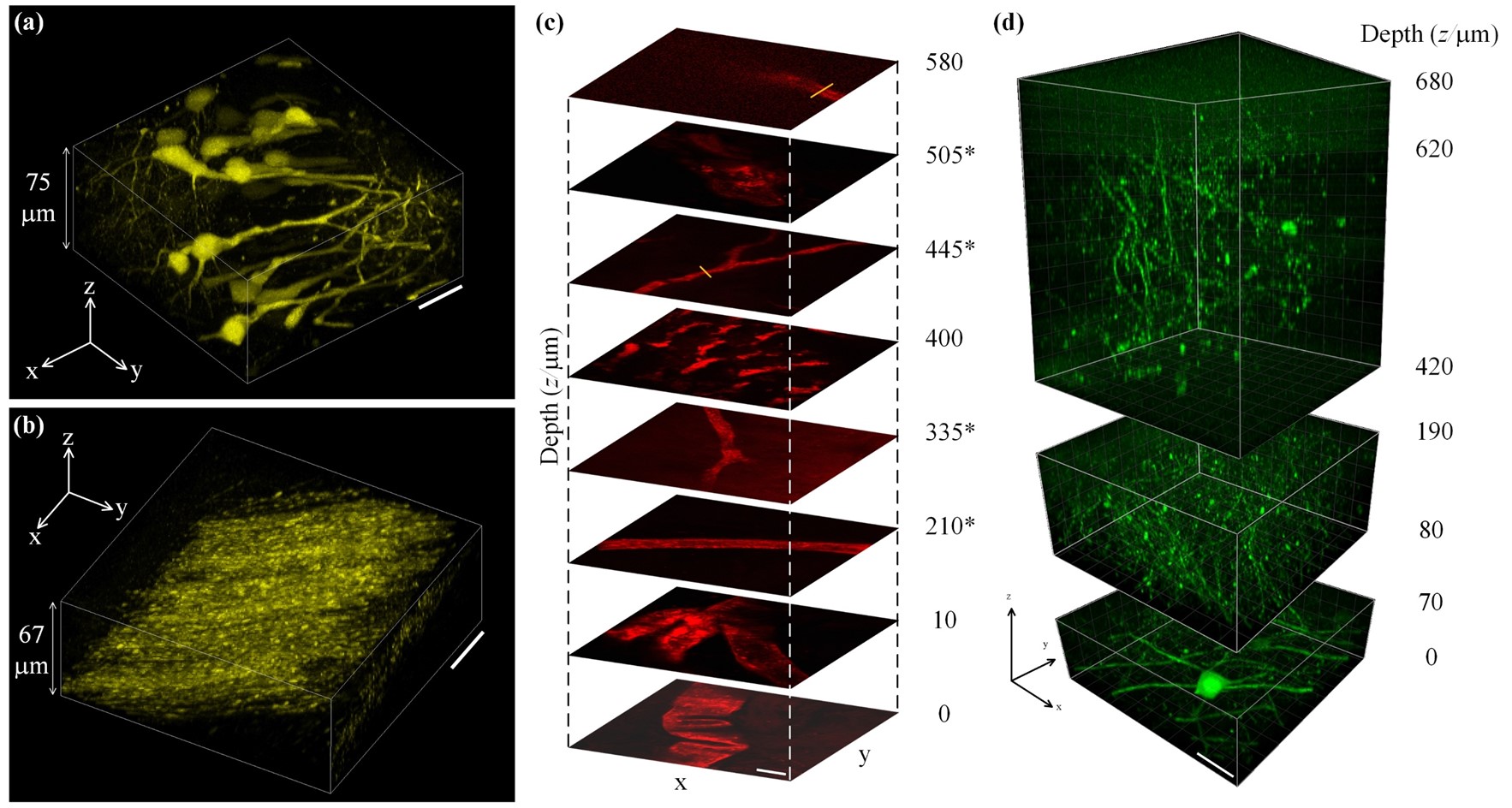1. High-performance 937-nm laser: See deeper with lower power
High-performance laser offers a new kind of light source for multiphoton microscopy, requiring only 10 mW of power to image tissue at depths of over 600 µm
How to image deeper tissues has been a great challenge in two-photon imaging. Laser sources can potentially address that challenge. However, the traditional Ti:sapphire mode-locked laser for two-photon imaging is limited by its high repetition frequency and cannot provide the high pulse energy needed for deep tissue imaging at low exposure power. The fiber laser overcomes the high repetition rate conveniently by adding a few dozen meters of fibers in the cavity, but in some cases it suffers from low gains and low signal-to-noise ratio (SNR).
The novel 937-nm laser source relies on self-phase modulation in the single-mode fiber to simultaneously boost the 1.8 μm power and compress the pulse width. The 937-nm laser design is suitable for high-sensitivity deep-tissue imaging of multiple fluorescence proteins. The laser light source provides two-photon excitations on multiple biological tissue types. The penetration depth demonstrated with a mouse brain reached 620 μm, revealing the capability of this technique for deep tissue imaging. The researchers also conducted second-harmonic generation (SHG) imaging, demonstrating label-free imaging and initially validating the potential of this light source for multimodal imaging applications.

Two-photon imaging results, based on the novel 937-nm laser. (a) and (b) Two-photon fluorescence images of YFP-labeled neurons and fibers in a mouse brain slice. (c) Two photon fluorescence images of the lipophilic tracer-stained vasculatures at different depths of the mouse brain. (d) 3D reconstruction of the images of EGFP-labeled mouse brain neurons. Image credit: He, Tang, et al., doi 10.1117/1.APN.1.2.026001.
Thanks to its low repetition frequency and high signal-to-noise ratio, the light source requires only 10 mW of power to image tissue at depths of over 600 µm, significantly lower than the 40-MHz fiber laser, which requires approximately 200-mW power at a similar depth. This greatly reduces photobleaching and photodamage in imaging, improving the depth of tissue imaging and safety in live (in vivo) imaging.